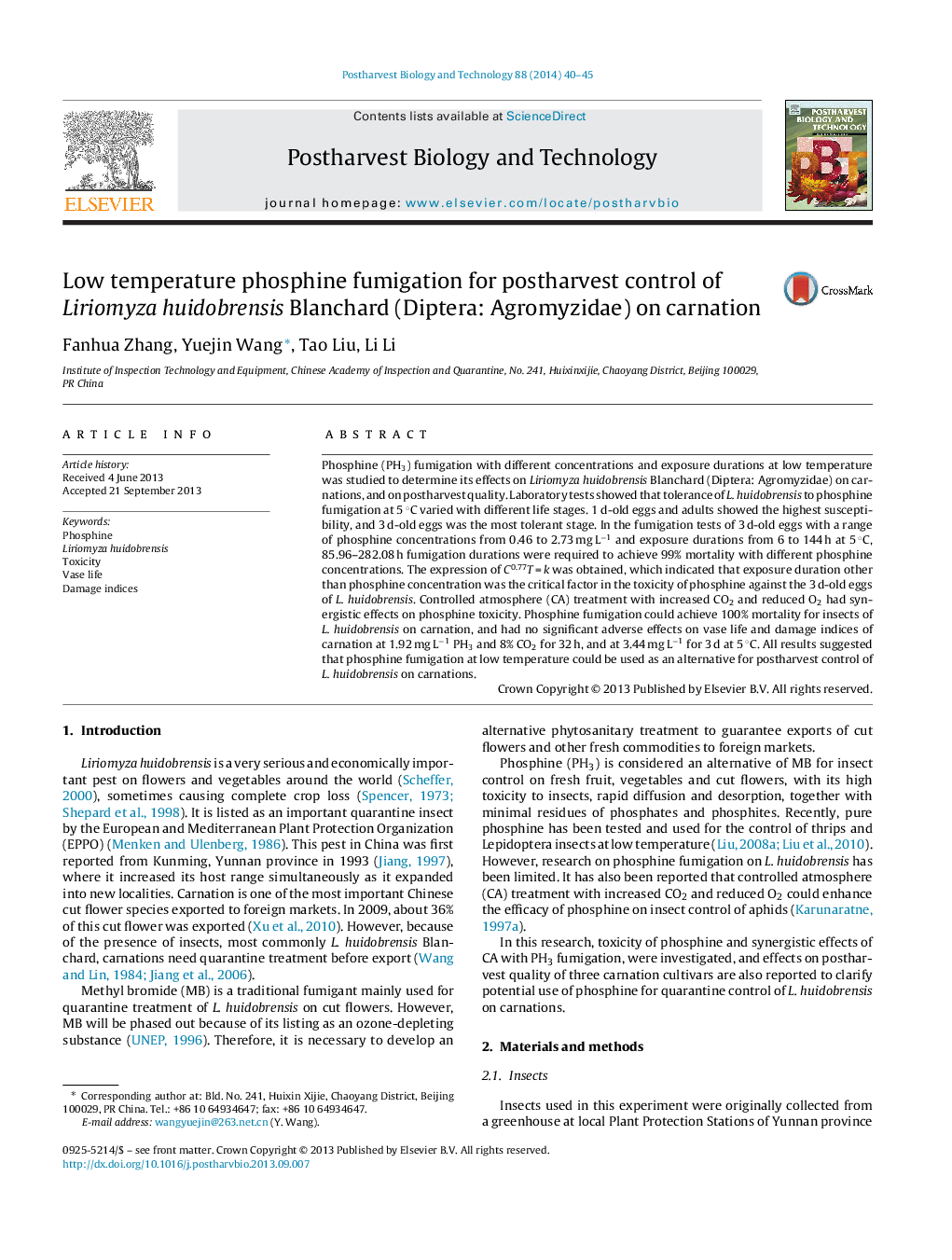| Article ID | Journal | Published Year | Pages | File Type |
|---|---|---|---|---|
| 4518362 | Postharvest Biology and Technology | 2014 | 6 Pages |
•Tolerance of Liriomyza huidobrensis to phosphine fumigation at 5 °C varied from different life stages and 3 d-old eggs was the most tolerant stage.•Exposure duration was the critical factor in phosphine toxicity against 3 d-old eggs.•Phosphine fumigation could achieve 100% mortality for Liriomyza huidobrensis on carnation, and had no significant adverse effects on vase life and or damage.•Tolerance of the three cultivars of carnation was different and Baltico was the least tolerant.•Phosphine fumigation at low temperature could be used as an alternative for postharvest control of Liriomyza huidobrensis on carnation.
Phosphine (PH3) fumigation with different concentrations and exposure durations at low temperature was studied to determine its effects on Liriomyza huidobrensis Blanchard (Diptera: Agromyzidae) on carnations, and on postharvest quality. Laboratory tests showed that tolerance of L. huidobrensis to phosphine fumigation at 5 °C varied with different life stages. 1 d-old eggs and adults showed the highest susceptibility, and 3 d-old eggs was the most tolerant stage. In the fumigation tests of 3 d-old eggs with a range of phosphine concentrations from 0.46 to 2.73 mg L−1 and exposure durations from 6 to 144 h at 5 °C, 85.96–282.08 h fumigation durations were required to achieve 99% mortality with different phosphine concentrations. The expression of C0.77T = k was obtained, which indicated that exposure duration other than phosphine concentration was the critical factor in the toxicity of phosphine against the 3 d-old eggs of L. huidobrensis. Controlled atmosphere (CA) treatment with increased CO2 and reduced O2 had synergistic effects on phosphine toxicity. Phosphine fumigation could achieve 100% mortality for insects of L. huidobrensis on carnation, and had no significant adverse effects on vase life and damage indices of carnation at 1.92 mg L−1 PH3 and 8% CO2 for 32 h, and at 3.44 mg L−1 for 3 d at 5 °C. All results suggested that phosphine fumigation at low temperature could be used as an alternative for postharvest control of L. huidobrensis on carnations.
